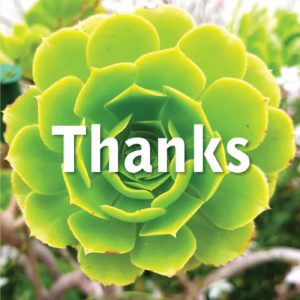Anyone who’s been around me for long will know I love coffee, painting and my daily thanks chart.
I love doing new creative things, and find developing habits hard work. This means I’m very excited about the ones I do have!
I’ve found that habits are a great way of developing the life I want. It means I choose small activities which slowly but surely form me into the type of person I want to be.
I first started doing a daily thanks chart when we were camping for 10 weeks. My husband got a contract with a company two hours drive from our home, and since money was super tight, and we wanted to stay together, we all moved there and camped for 10 weeks.
It was hard.
We had 78 steps to walk to the loos each time either of my children needed to go.
We had to queue to use the 2 washing machines, and time it right so that we could dry the clothes outdoors on a line strung between the trees.
We had to go food shopping every couple of days as we only had enough space in our cool box for two days worth of food.
BUT
I decided that each day I would get up before my children, drink a cup of coffee, do a quick sketch and make a list of at least three good things from the last 24 hours.
This completely changed my experience of this tough time.
It allowed me to notice and appreciate the early morning shadows of the silver birch trees dancing on the canvas of our tent. I saw beauty in the shield bugs my daughter brought to show me, in the huge, orange, low hanging Harvest moon which we might well not have seen if we’d been living indoors, in the new boat-living friends we met who considered our tent-life completely normal.
What started off as a discipline with a target of three things became easy – and I had to choose which three things to include!
I found it so life-changing that I continued doing it after we moved out of the tent, and am still doing it today, three years later!
I find that on the weeks when I’ve filled it on most days, my perspective on life, including the difficult stuff, is different. It seems that by focusing on the blessings God has put in my life, I’m able to see more and more of them, and less perturbed other things.
In order to share this habit, I’ve created a series of resources including different styles of thanks chart, each with a space for each day in the month, plus a few daily prompt charts. The prompts are things like: “I’m thankful for food especially…” I find it’s really helpful to be specific when I’m being thankful. Not just food, but specifically the mixed grill I had for dinner last night. Not just ‘friends’, but the specific friend who texted me last night with the suggestion to meet up next week.
Of course, this is an ancient practice, and one which features in many places in the Bible and in the worship and lifestyle of God’s people.
The earliest thanks offerings are listed in Leviticus, and are the only non-compulsory offering. It’s the Todah offering (Leviticus 7:12-15) and is brought in response to a significant action of God on their behalf (see Jeremiah 33).
Many of the psalms are songs which were used to thank and praise God for his mighty acts.
One phrase is often repeated:
“Give thanks to the Lord Almighty,
for the Lord is good;
his love endures forever.” (Psalm 136:1)
I’ve previous considered thanks and praise to be quite separate types of worship, but from looking at the Hebrew words used in the psalms, they often seem to be used together or even interchangeably.
When you think about this, though, it’s obvious why: the actions of God are a result of his character, so to praise his character is intricately connected to thanking him for his actions.
So when I’m thanking God for specific blessings I see in my life, I am also praising his goodness, which is the reason those blessings exist!
This links between actions and character is the reason developing habits is the way to form our character.
Of course, the Psalms are riddled with thanks, and then we come to the life of Jesus, who gives thanks many times, usually while breaking bread (feeding of the 5000, meal at Emmaus etc). This thanks may well have been a ritual prayer, still spoken by Orthodox Jews whenever they eat bread:
“We bless you, Lord our God, king of the universe, who brings bread from the earth.”
This thanks prayer is one which is used in a Passover meal, and so is part of our communion. Having a way to thank God every time we eat is a great way to make sure we take a moment to recognise his greatness and the blessings in our lives during the day.
How can we increase our thankfulness?
Having a prayer we use before eating is a great way, although you may find you need to mix it up from time to time to make sure it’s actually allowing you to thank God, and not just words you say.
I think thankfulness is like a muscle – the more you use it, the more you want to use it!
Having a daily habit of thanks is one way. This can be a personal thing we do, either draw or written, spoken out loud or quietly prayed. Many people find a walk in nature stimulates their ‘thanks gland’!
We can also do this with other people, the people we live with or those we meet with as church. Having a moment over a meal to find out what people are thankful for from today is a great to both find out how everyone is doing, and also thank and praise God.
We can use song to thank God – maybe make a play list of thanks songs and take it in turns to choose which one to choose.
We can collect our thanks in a jar or a box and choose a specific time (e.g. New Year’s Eve or the end of the month) to get out all our thanks and thank God for all of them.
To inspire more thankfulness, I’m doing a month of #thankstober on Facebook and Instagram, where I’ll be giving away a free thanks chart and thanks prompts plus other resources to develop thankfulness. Plus there will a Thanks edition of my Faith at home mini-mag exploring lots of fun, creative ways to be thankful as family. Do come and find me and share your ideas on being thankful!

